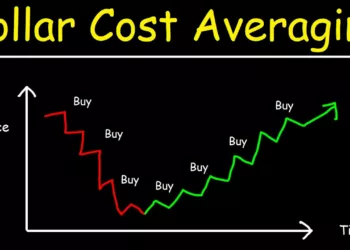Dividend investing can be an extremely powerful wealth-building strategy. Unlike growth stocks that may never pay dividends, dividend stocks provide regular income that can compound over time. In this comprehensive guide, we’ll explore what exactly dividends are, the mechanics of how they are calculated and paid, how investors can earn them, the power of compounding dividends over long periods, and why they can supercharge portfolio returns.
What Are Dividends?
A dividend is a cash payment made by a publicly traded company to its shareholders, usually on a quarterly basis. Companies pay dividends out of their net profits and excess cash flow after making investments to grow the business.
The company’s board of directors determines the dividend amount based on earnings, cash reserves, reinvestment opportunities and future outlook. The dividend payment date is set in advance on the company’s dividend calendar.
Calculating Dividends
Dividends are quoted as the dollar amount each share receives. To determine the total dividend you’ll receive, multiply the dividend per share by the number of shares you own.
Total Dividend Payment = Dividend per Share x Number of Shares Owned
Dividend per share is also shown as a percentage of the stock price, known as the dividend yield. This allows income-oriented investors to compare yields across stocks.
Dividend Yield = Annual Dividend per Share / Current Stock Price
For example, Coca Cola stock pays quarterly dividends of $0.44 per share. If you owned 100 shares, you would receive $44 every quarter in dividends. With the stock trading at $60, Coke has a dividend yield of 2.9% ($1.76 annual dividend / $60 stock price).
Key Takeaways on Dividends
- Dividends are cash payments from companies’ profits and excess cash flow
- They are usually paid quarterly on scheduled dividend payment dates
- Dividend yield measures annual dividend payments as a percentage of the stock price
By reinvesting dividends to buy more shares, investors can grow their positions and compound returns over time. This passive income can really add up.
Earning Dividends as an Investor
As a shareholder of dividend-paying stocks, you can earn a steady stream of dividend income. The dollar amount you receive depends on the stock’s dividend yield and the number of shares you own.
Let’s explore a few easy ways to start collecting dividends:
1. Buy Individual Dividend Stocks
Research and invest in dividend stocks that match your goals. Look for companies with strong competitive advantages, consistent earnings growth, and commitment to paying rising dividends over time. You may want to target stocks with at least a 2-3% dividend yield. Always build a diversified portfolio across sectors and industries.
2. Invest in Dividend ETFs and Mutual Funds
Exchange-traded funds (ETFs) like Schwab U.S. Dividend Equity ETF (SCHD) and Vanguard High Dividend Yield ETF (VYM) offer instant diversification and dividend income. Consider adding some dividend ETFs to your portfolio for easy, low-cost access to dividends.
3. Enroll in a Dividend Reinvestment Plan (DRIP)
Most brokerages offer DRIP programs that let you automatically reinvest dividends to acquire new shares. This allows you to compound earnings and accelerate portfolio growth. Enrolling is very simple and can supercharge total returns over time.
The Power of Compounding Dividends
Over long time periods, continually reinvesting dividends can dramatically amplify returns through exponential growth powered by compound interest.
Let’s walk through an example of how a long-term investor with a 40 year time horizon can utilize dividends:
- Initial investment in Johnson & Johnson stock = $10,000
- Current dividend yield = 2.5%
- Annual dividend in Year 1 = $250
- Annual dividend raises averaging 5% per year
- Reinvest all dividends to buy more JNJ shares
After 40 years, here is the stunning impact:
- Original investment compounded to $57,500
- Total dividends earned = $68,700
- Extra return from reinvested dividends = $58,700!
That’s an additional 120% return simply from the power of compounding dividends over time!
This demonstrates why dividends can be such a powerful component of total returns over long investing horizons.
The Math Behind Compounding Dividends
Reinvested dividends purchase new shares, which earn progressively higher dividend payments each year. The reinvestment accelerates share accumulation and dividend income. This enables exponential expansion of your shareholding – the key driver behind compound returns.
Let’s analyze the math year-by-year:
| Year | Original Shares | Dividends | New Shares | Total Shares |
|---|---|---|---|---|
| 1 | 1,000 | $250 | 10 | 1,010 |
| 5 | 1,153 | $345 | 14 | 1,167 |
| 10 | 1,372 | $491 | 20 | 1,392 |
| 20 | 1,948 | $873 | 35 | 1,983 |
| 30 | 2,805 | $1,652 | 66 | 2,871 |
| 40 | 4,172 | $3,079 | 123 | 4,295 |
In summary, dividends provide crucial fuel for the compounding process. They deliver income today while accelerating growth for the long run.
Conclusion
In conclusion, dividend stocks can enhance portfolio returns in various ways:
- Reliable income paid regardless of market volatility
- Higher total returns over multi-decade periods
- Portfolio stability since dividends are generally less volatile than prices
- Inflation protection through consistent dividend raises
Dividend investing works best for long-term investors who can let compound returns amplify over many years. While extremely powerful, it should complement other portfolio strategies tailored to your individual timeline and risk tolerance.
Related Post: The Power of Dividend Investing: How Full-Time Employees Can Supercharge Their Wealth
I hope this guide gives you a deeper look into what dividends are and how reinvesting them can dramatically impact performance over long horizons. Let me know if you have any other dividend investing questions!















































